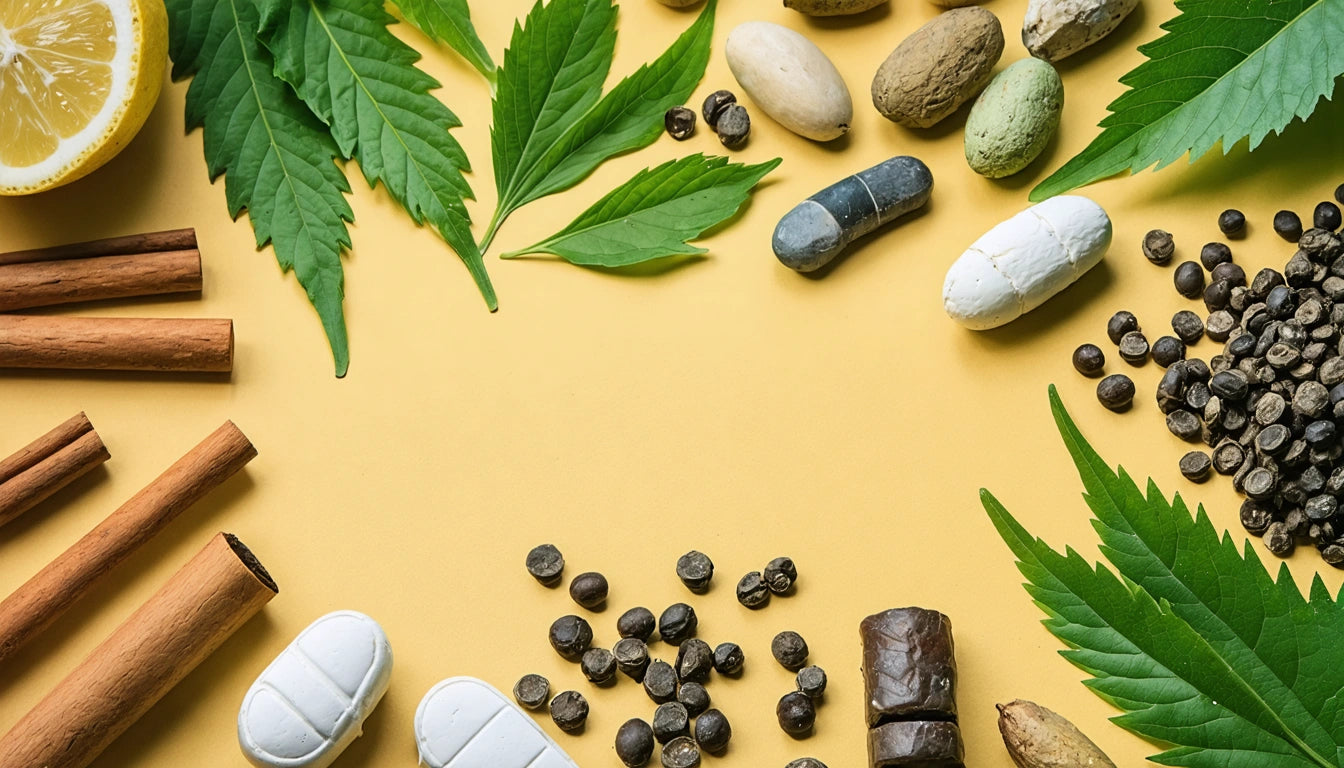Table of Contents
Understanding the Chemical Composition of Marijuana: Key Compounds and Carcinogens
Marijuana contains hundreds of chemical compounds that contribute to its effects, aroma, and potential therapeutic benefits. When consumers ask what chemicals are in weed, they're often surprised to learn that cannabis contains over 500 different chemical substances, with more than 100 cannabinoids identified to date. This complex chemical profile explains why marijuana produces such varied effects and why different strains offer unique experiences.
Primary Cannabinoids in Marijuana
The main chemicals in marijuana are cannabinoids, which interact with the body's endocannabinoid system. While researchers have identified over 100 cannabinoids, a few stand out as particularly significant:
- THC (Tetrahydrocannabinol): The primary psychoactive compound responsible for marijuana's intoxicating effects. THC is what most people refer to when asking what is the main chemical in weed.
- CBD (Cannabidiol): A non-intoxicating cannabinoid known for potential therapeutic properties without producing a high.
- CBG (Cannabigerol): Often called the "mother cannabinoid" because other cannabinoids derive from its acidic form.
- CBC (Cannabichromene): A non-psychoactive cannabinoid being studied for various potential benefits.
- CBN (Cannabinol): A mildly psychoactive compound that forms when THC ages and oxidizes.
These cannabinoids interact with receptors throughout the body, particularly in the brain and immune system, producing marijuana's characteristic effects. Understanding how these chemicals affect the body and mind helps explain marijuana's complex impact on users.
Terpenes and Flavonoids: The Aromatic Compounds
Beyond cannabinoids, marijuana contains numerous terpenes and flavonoids. These compounds contribute significantly to the plant's aroma, flavor, and potentially some therapeutic effects:
Common Terpenes in Cannabis
- Myrcene: Earthy, musky aroma; potentially sedative effects
- Limonene: Citrus scent; may elevate mood
- Pinene: Pine aroma; potentially improves alertness
- Linalool: Floral scent; possibly calming effects
- Caryophyllene: Spicy, peppery notes; unique among terpenes for interacting with cannabinoid receptors
Flavonoids contribute to the plant's color and antioxidant properties. Together with terpenes, they create what's known as the "entourage effect" - the theory that cannabis compounds work better together than in isolation.
Potential Carcinogens and Harmful Compounds
When discussing how many carcinogens are in weed, it's important to distinguish between the plant itself and the byproducts of combustion. Smoking marijuana produces many of the same harmful compounds found in tobacco smoke.
When cannabis is burned, it can produce approximately 33 known carcinogens. These include:
- Polycyclic aromatic hydrocarbons (PAHs)
- Nitrosamines
- Benzene
- Carbon monoxide
- Tar compounds
It's worth noting that alternative consumption methods like vaporization, edibles, or using specially designed pre-roll products may reduce exposure to these combustion-related chemicals while still delivering the desired cannabinoids.
Chemical Variation Across Cannabis Strains
The chemical profile varies significantly across different cannabis strains, explaining the diverse effects users experience. Different types of marijuana contain varying ratios of cannabinoids and terpenes:
- Indica-dominant strains often contain higher myrcene levels, contributing to sedative effects
- Sativa-dominant varieties typically feature more limonene and pinene, associated with energizing properties
- Hybrid strains offer balanced or targeted chemical profiles
The growing environment, cultivation techniques, and processing methods all influence the final chemical composition of cannabis products. This explains why even the same strain can vary in potency and effect profile between producers.
For concentrated forms, cannabis concentrates contain significantly higher levels of cannabinoids, with some products exceeding 80% THC content.
Future Research and Understanding Marijuana's Chemical Complexity
As cannabis legalization expands, research into what chemicals are in weed continues to evolve. Scientists are discovering new cannabinoids and investigating their potential effects. This growing knowledge helps consumers make more informed choices about the products they use.
The chemical complexity of marijuana explains why different strains and products produce such varied effects. By understanding what is the main chemical in marijuana and how it interacts with other compounds, consumers can better select products aligned with their desired outcomes.
Future research will likely focus on:
- Identifying and studying minor cannabinoids
- Understanding the full scope of the entourage effect
- Developing more targeted cannabis-based therapies
- Reducing exposure to potential carcinogens through improved consumption methods
As our understanding of cannabis chemistry deepens, so too will our ability to harness its beneficial properties while minimizing potential risks. The complex answer to how many chemicals are in marijuana reflects the plant's remarkable diversity and explains its wide-ranging effects on human physiology.











Leave a comment
All comments are moderated before being published.
This site is protected by hCaptcha and the hCaptcha Privacy Policy and Terms of Service apply.